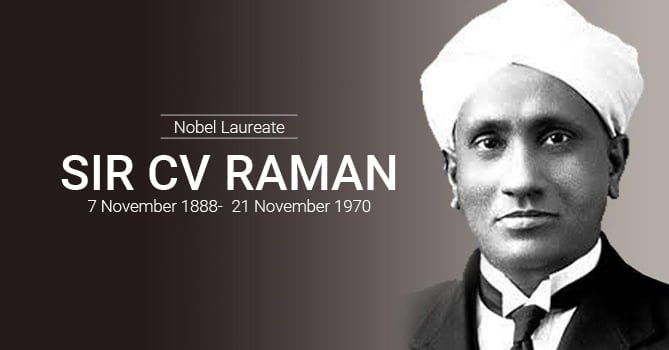A short biography of C. V. Raman

A short biography of C. V. Raman: C. V. Raman or (Sir Chandrasekhar Venkata Raman), was born on 7 November 1888 Trichinopoly Madras presidency British India (Tamil Nadu, India). The innovative work of this legend from India, within the sphere of scattering of sunshine, earned him a reward in Physics in 1930.
Education
Raman studied in St. Aloysius Anglo- Indian High school in Vishakhapatnam. Raman completed his metric education at 11 and intermediate at the age of 13 years in 1902. Raman joined Presidency College in Madras (now Chennai).where his father (Chandrasekhar Ramanathan Iyer) had been transferred to teach mathematics and physics. There Raman got a B.A. (Bachelorof Arts) degree from the University of Madras in Physics. There he was awarded a laurel wreath in physics, later in 1907 he completed his M.A. (Master of Arts) with the highest distinction.
Career
His brother (Chandrasekhar Subrahmanya Ayyar ) joined The IFS (Indian Finance service) which is that the foremost honorable government service in India, which is now called Indian Audit and Account service. He started his career working in an exceedingly government sector, but in 1917 he left that job because at that time India wasn’t independent so Britishers weren’t supporting Raman to go further within the field of Physics, but after independence, in 1948 he founded his institute named “Raman research Institute where he did all his researches. Raman also contributed greatly to IACS (Indian Association of the cultivation of the science).


What is Raman Effect?
C.V. Raman was on a Ship, while he was going he saw that the color of the water is blue but he knew that water is transparent i.e. we can see through it and light can completely pass through it. After coming from the trip he did research on it and he found the reason behind this and later it was called Raman Effect.
Raman scattering, change in the wavelength of light that occurs when a light beam is deflected by molecules or atoms. When a beam of light transverse a dust-free, transparent sample of a chemical compound a little fraction of the light emerges in directions other than that of the incident (incoming).His effect is feeble in liquid compound. A short part, however, has wavelengths different from that of the incident light; its presence is a result which is called Raman Effect.

Awards and Honors

- He was given Curzon Research Award in (1912), while he was working in Indian Finance Services.
- He was awarded Franklin Medal in (1941), in Franklin Institute which is in Philadelphia.
- In 1954 he was awarded Bharat Ratna.
- In 1957, he was awarded the Lenin Peace prize
- In 1930, he received the Hughes Medal of the Royal Society.
- In 1928, he received the Matteucci from the Academia in Rome.
- In 1930, Chandrasekhar Venkata Raman was given Nobel Prize in Physics. He was given this award because he has Discovered the “Raman Effect of Scattering of light’’. Before him, Rabindranath Tagore was awarded Nobel Prize in Literature.
At the end
He experienced a major heart attack at the end of October in 1970, while he was working in a laboratory. After this major heart attack, he was referred to a hospital where he lived for few days, he refused to stay there further and when he was counting his last breathe he arranged a meeting with the professors of his institute. And he died in the garden of Raman research institute.

Written by: Pranjal Gautam (Class VIII)




Very good written on Sir Raman and I am happy that Small age students are encouraged in writing articles. Keep it up !!!
THANK YOU SIR,
nice Article !!! (:
It was really great. Research work is awesome
Great article….Would like to see more articles from you:)
Great article….Would like to see some more educational articles from you… 🙂
Bro nice article on C.V. Raman 👍👍👍👏👏👏
Keep it up !!!!
Very Nice written Article !!!
OOOOPPPPP!!!
Very Nice written Article !!!
OOOOPPPPP!!!
Very good Keep it up